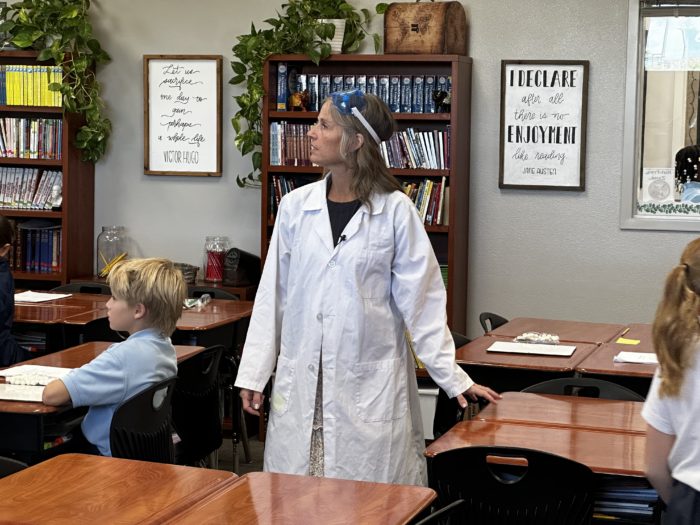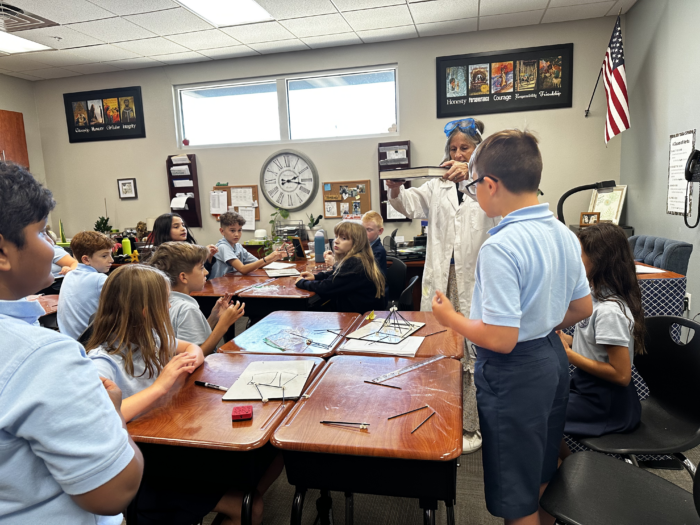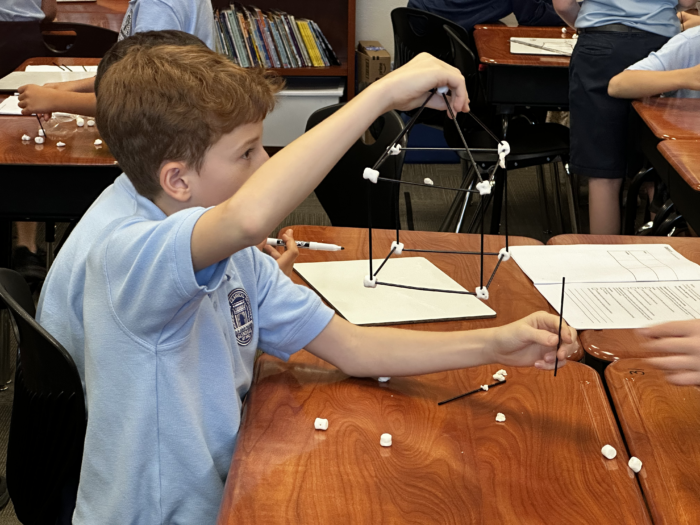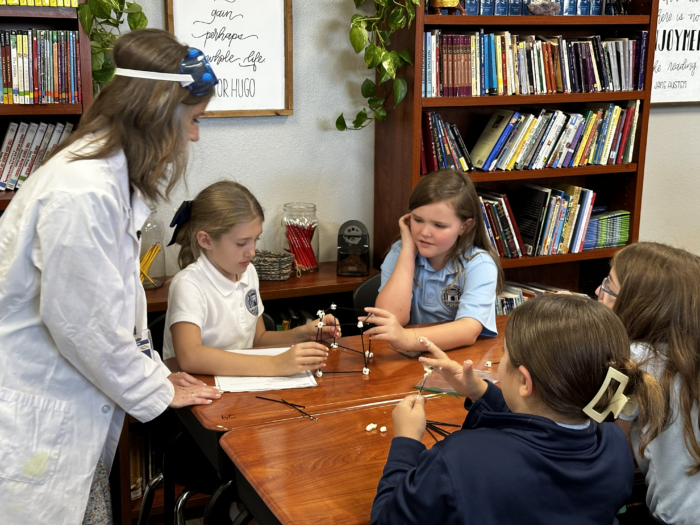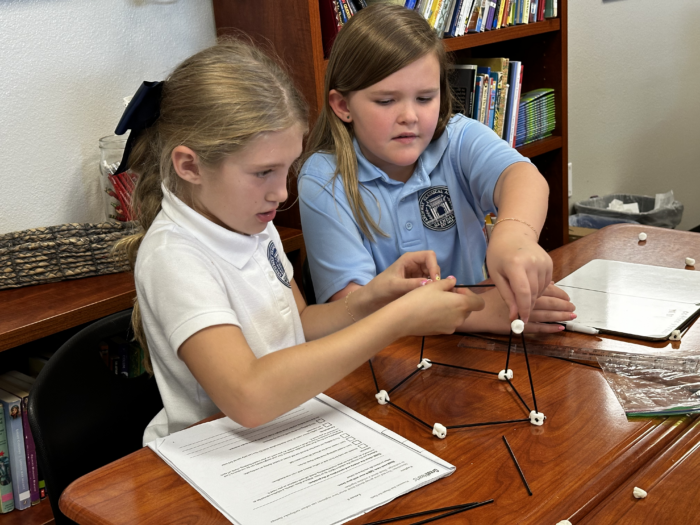Fourth-Grade Scientists Tackle Earthquake Challenge
Archway Glendale August 24, 2024 -
In Mrs. Terpstra’s fourth-grade class at Archway Glendale, students are diving deep into the science of natural disasters, particularly earthquakes. As part of their studies, they recently participated in a hands-on project that brought their lessons to life. Donning her science goggles and white lab coat, Mrs. Terpstra gave instructions for the activity, a familiar routine for her students whenever they embark on a new science experiment.
The challenge? Build an earthquake-proof structure using just coffee sticks and marshmallows. The goal was to create a building that could withstand the shaking of an “earthquake,” simulated by Mrs. Terpstra dropping a heavy book on the desk.
To make things even more interesting, the students were given a time limit of 15 minutes and had to work within a limited budget of imaginary money. Each coffee stick cost one unit, and each marshmallow was two units. Once they ran out of resources, they couldn’t purchase anymore, making their design decisions even more critical.
The structures had to meet specific criteria as well. They needed to be at least a foot tall and consist of three stories. This proved to be quite the challenge. Fourth-grader Ahaan explained, “It was really hard, and we did okay. We had to scrap the project a few times to redo it, many times in fact. If you don’t get the science project right the first time, it takes forever.”
Mrs. Terpstra emphasized to her students that there is no failure in science, only attempts, reminding them that many advances in science required numerous tries before getting it right. This encouragement freed the young “architects” to take risks, try new things, and learn from each misstep without the pressure of getting it perfect the first time.
The students quickly learned that careful planning and resource management were key to success. They had to ensure their buildings were tall and stable enough to survive the simulated earthquake. “You have to make sure it’s properly… built so that if an earthquake happens, it won’t just tip over—it will just slide,” Ahaan added.
In the end, not all the structures met the height requirement, but some of them stood tall through the test. “It wasn’t stable, but it was still a foot tall, and two of [the structures] actually stood. I have to say, that was pretty impressive!” Ahaan proudly noted.
This activity reflects the broader Great Hearts approach to science education, which emphasizes direct observation, experimentation, and the integration of scientific knowledge with other liberal arts disciplines. Great Hearts believes that nature and the cosmos are ordered, beautiful, and worthy of knowing. The sciences are a sure path to a state of wonder, and that experience must be cultivated through exercises like these.
The project was more than just a fun activity. It was an opportunity for students to apply their knowledge in a practical way, learning valuable lessons about engineering, problem-solving, and teamwork. Mrs. Terpstra’s class is clearly on its way to mastering the science behind earthquakes, one marshmallow at a time.
Do you have a story or know of a story that you would like to see featured at Great Hearts? Please contact jason.moore@greathearts.org.
